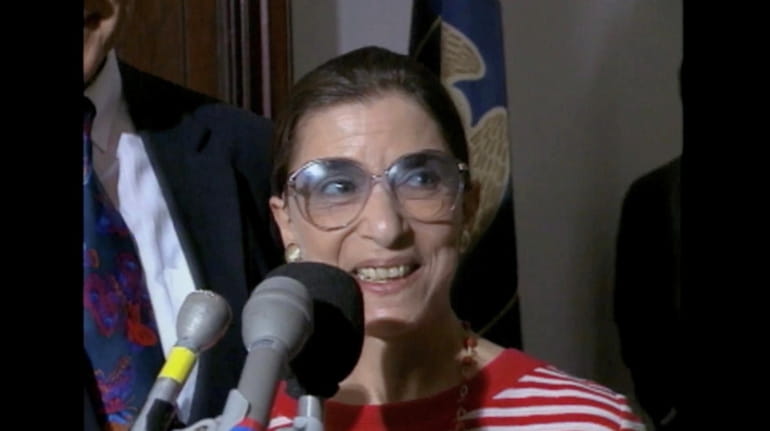Feminism and trans advocacy and progressives

"Ruth: Justice Ginsburg In Her Own Words" airing on STARZ. Credit: American Film Foundation
The other day, the American Civil Liberties Union issued an extraordinary apology for a tweet that altered a quote by the late Justice Ruth Bader Ginsburg, onetime director of the ACLU’s Women’s Rights Project. The tweet removed references to women from a quote about abortion rights, making it gender-neutral—a move met with anger and ridicule from many critics. This flap was one of several recent incidents of increasingly visible conflict over feminism and transgender advocacy in the progressive movement.
The Ginsburg quote, from her 1993 Supreme Court confirmation hearings, read: "The decision whether or not to bear a child is central to a woman’s life, to her well-being and dignity… When government controls that decision for her, she is being treated as less than a fully adult human responsible for her own choices." The tweet replaced "woman’s" with "[person’s]," "for her" with "for [people]," and "she" and "her" with "[they]" and "[their.]"
The idea was to be inclusive toward the tiny minority—about 0.5 percent, according to Census data—of biologically female people who identify as male or nonbinary. Tensions over gender-specific vs. gender-neutral language have been brewing in the abortion rights movement for a while. But it’s one thing to use gender-neutral language in pamphlets about abortion and other reproductive issues, another to literally rewrite history by altering a major figure’s words.
The alteration also greatly diminishes the power of those words. Ginsburg spoke specifically about women as a group historically subjected to discrimination and paternalistic protections, and abortion rights as a key element of women’s struggle for equality. Without getting into a debate on abortion and feminism, one can say that altering the language dilutes, even undercuts that message.
Meanwhile, another apology was issued by the prestigious British medical journal Lancet for a cover featuring a quote that sparked a backlash: "Historically, the anatomy and physiology of bodies with vaginas have been neglected."
Some took this to mean that "bodies with vaginas" was Lancet’s official new term for (cisgender) women. Not so: the quote came from an article about an exhibition on menstruation at a place called the Vagina Museum; the article itself used "women" and "girls" several times. Yet the choice of cover feels like a deliberate provocation in the battle over how to talk about gender and biological sex. To many, it also felt like a creepy dehumanization of women.
Along the same lines, a recent Los Angeles Times feature about a new documentary about the late civil rights activist and feminist Pauli Murray referred to Murray as "they" and "them," asserting that Murray—who died in 1985 and never used any pronoun except "she"—was transgender and nonbinary.
Many activists have made this claim, and Murray did struggle with her gender identity as a young woman in the 1930s and 1940s. But evidence suggests that her struggle was not about being transgender so much as about the era’s sexist norms, which led her to believe she might have hidden male "sex glands" because of her attraction to women and rejection of traditional roles. Later in life, she fully embraced her womanhood and actively fought for women’s rights.
There are very real transgender civil rights issues. But they can be discussed and championed without erasing biological sex, censoring the word "woman," or posthumously altering the words and identities of feminist pioneers.
Columnist Cathy Young's opinions are his own.

